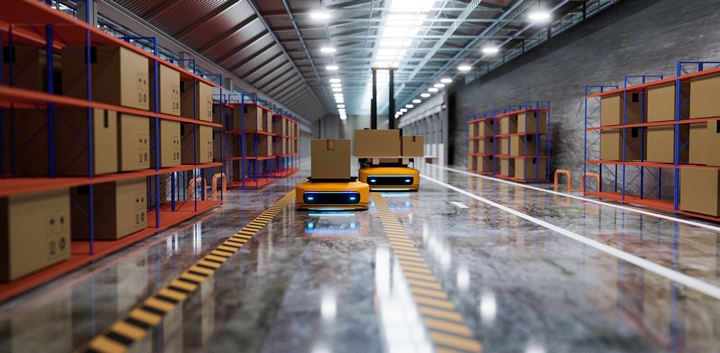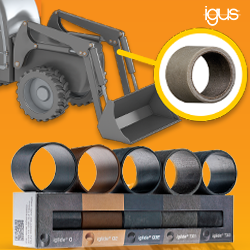The bottom line is this: in the age of AI, the winners won't be the warehouses with the flashiest tools. They'll be the ones that know how to orchestrate people, processes, and technology into a system that is both efficient and resilient.
 What Warehouses Really Need to Compete in the Age of AI
What Warehouses Really Need to Compete in the Age of AI

Q&A with Naveen Chandra Kukkala, Director of Distribution | EssilorLuxottica
Warehouses are flooded with technology options, from robotics to predictive analytics. How should leaders cut through the noise and identify the tools that actually move the needle on efficiency and resilience?
The challenge for warehouse leaders today isn’t scarcity of technology but, it’s the overwhelming abundance of it. Robotics, AI dashboards, predictive models: each promises transformative gains, yet many decision makers struggle to separate what’s truly impactful from what’s merely fashionable.
Too often, these choices are made on shaky ground. I’ve seen projects stall or fail because leaders didn’t have enough reliable data to support their assumptions, or because the data they relied on was incomplete, inconsistent, or outdated. When that happens, even the most advanced systems can introduce more risk than value.
That’s why the real focus shouldn’t be on individual tools, but on building an ecosystem with strong orchestration. Technology should not be layered on in silos; it should be integrated to serve workflows, reduce friction, and improve adaptability.When evaluating investments, I recommend two simple but powerful criteria:
- Does this reduce decision latency? In other words, does it help the operation act faster and smarter?
- Does this strengthen resilience against disruption? Technology that only drives efficiency without adaptability will not stand the test of volatility.
These principles form the foundation of my Automation Readiness and Integration Framework (ARIF). ARIF helps organizations move beyond ROI spreadsheets to a more holistic evaluation, testing whether a solution is compatible with existing workflows, data realities, and human–machine collaboration models.
The bottom line is this: in the age of AI, the winners won’t be the warehouses with the flashiest tools. They’ll be the ones that know how to orchestrate people, processes, and technology into a system that is both efficient and resilient.
You’ve integrated machine learning, Lean Six Sigma, and human–machine collaboration in your work. How do you see these disciplines working together to create the warehouse of the future?
I see these disciplines as three pieces of a puzzle that only create real impact when they are connected.
Lean Six Sigma provides the rigor to map processes, eliminate waste, and make sure every improvement has measurable value. By itself, though, it often focuses on incremental change. Machine learning takes that discipline further. Instead of reacting to yesterday’s metrics, it can predict tomorrow’s challenges. It can forecast pick volumes, identify congestion risks, or trigger replenishments before they become emergencies. Without the structure of Lean, however, AI can end up optimizing the wrong things.
That is where human–machine collaboration becomes essential. AI and robotics should not replace human judgment. They should enhance it. The warehouse of the future will depend on teams who can interpret data-driven insights, manage exceptions, and make creative decisions that machines cannot. This philosophy is at the core of my Labor Orchestration Knowledge Map, or LOKM. The model aligns labor, automation, and data into a single orchestration layer. It allows leaders to see not just who is available, but how work should flow across people, processes, and systems in real time.
When Lean, machine learning, and orchestration are brought together in this way, warehouses do more than become efficient. They become adaptive, capable of learning and improving continuously while empowering the workforce at every step.
Many operators fear AI will replace human workers. In your experience, how can AI and robotics be introduced in ways that empower teams and elevate human decision-making rather than displacing it?
The fear that AI and robotics will replace people is understandable, but in my experience, it usually comes from poor implementations. When technology is imposed without involving the workforce, it creates anxiety and resistance.
The most successful projects I have led treated AI as a partner in decision-making, not a replacement. For example, AI agents can surface the top priorities for a shift, but it is still the supervisors who decide how to allocate people and adjust work in real time. Robotics can take on repetitive, physically demanding tasks, while humans focus on problem solving, exception management, and customer-critical decisions.
The message to teams should be clear: AI takes the routine burden, while people keep the judgment and creativity. In practice, this means training employees early, giving them visibility into how the systems work, and positioning automation as something that amplifies their impact.
When introduced in this way, AI and robotics not only improve efficiency, they also make the work itself more engaging. Workers feel empowered rather than threatened, and organizations build a culture where technology and people improve together.
Data is the backbone of AI success, but many warehouses struggle with data quality and visibility. What practical steps can organizations take to ensure they’re truly AI-ready?
Data readiness is one of the most overlooked challenges in warehouse automation. I have seen organizations roll out AI projects only to find that their data is incomplete, inconsistent, or sitting in silos. When that happens, the technology does not just underperform, it can actually create new risks for the operation.
The first step is to map out the critical decision points in the warehouse. These might be replenishment triggers, wave release thresholds, or labor allocation rules. Leaders should then ask a simple question: do we have accurate, real-time data feeding these decisions? If the answer is no, the focus should be on strengthening the data foundation before pursuing AI.
The next step is integration. Even good data loses value if it remains split between a WMS, automation platforms, and labor planning tools. Pulling these sources together into a single view is what makes true orchestration possible.
Finally, organizations should test their readiness through simulation. Running scenarios in a digital twin or pilot environment quickly shows where gaps exist before those gaps cause issues in live operations.
This is why I created the Automation Readiness and Integration Framework, or ARIF. It gives organizations a structured way to check whether their workflows, systems, and data pipelines are ready to support AI. In other words, it helps leaders build confidence that investments are being made on solid ground.
The reality is simple: AI does not fix bad data, it magnifies it. Companies that invest early in data quality, integration, and testing will be the ones truly prepared to capture its benefits.
Looking five to ten years ahead, what will separate the warehouses that thrive in the AI era from those that fall behind, and what should leaders be doing today to prepare?
The warehouses that thrive in the next decade will be the ones that design for resilience, not just efficiency. Disruptions are no longer rare events. Supply shocks, labor shortages, and regulatory changes will continue to reshape the landscape. The operations that succeed will be those that can adapt in real time rather than those that are locked into rigid systems.
A critical enabler of this adaptability will be building an orchestration layer that connects people, automation, and data into a single decision-making system. But orchestration will only work if people trust the AI that drives it. That is why explainable AI is so important. Supervisors and associates need to understand why an algorithm is prioritizing one order over another or recommending a certain resource shift. If the system feels like a black box, adoption will suffer.
To prepare, leaders should focus on three priorities today. First, invest in orchestration engines that allow different systems to work together seamlessly. Second, build trust in AI by making it transparent and explainable, and by involving employees in the process so they see it as a partner. Third, begin piloting digital twins or simulation models to stress-test operations before disruptions happen.
If the 2010s were about efficiency, the 2020s and 2030s will be about resilience and trust. The warehouses that succeed will not be the ones with the flashiest automation, but the ones that can keep running smoothly because both people and systems are aligned and confident in the decisions being made.
 Naveen Chandra Kukkala is an industrial engineering leader with over a decade of experience transforming global supply chain operations through automation and operational excellence.. As Director of Distribution at EssilorLuxottica, he leads warehouse optimization, automation, slotting, and process reengineering where he integrates machine learning, Lean Six Sigma, and human–machine collaboration to boost resilience and performance.His leadership spans roles at Medtronic, Nordstrom, and DHL Supply Chain, managing large-scale automation, network consolidations, and process improvements. Naveen holds dual master’s degrees in Industrial & Systems Engineering and Project Management, along with Lean Six Sigma Black Belt and PMP certifications. A regular speaker and contributor to industry forums, he has presented at INFORMS, WERC, and SCTECH, and serves on advisory boards for CSCMP, WERC, and ISCEA.
Naveen Chandra Kukkala is an industrial engineering leader with over a decade of experience transforming global supply chain operations through automation and operational excellence.. As Director of Distribution at EssilorLuxottica, he leads warehouse optimization, automation, slotting, and process reengineering where he integrates machine learning, Lean Six Sigma, and human–machine collaboration to boost resilience and performance.His leadership spans roles at Medtronic, Nordstrom, and DHL Supply Chain, managing large-scale automation, network consolidations, and process improvements. Naveen holds dual master’s degrees in Industrial & Systems Engineering and Project Management, along with Lean Six Sigma Black Belt and PMP certifications. A regular speaker and contributor to industry forums, he has presented at INFORMS, WERC, and SCTECH, and serves on advisory boards for CSCMP, WERC, and ISCEA.
The content & opinions in this article are the author’s and do not necessarily represent the views of RoboticsTomorrow
Featured Product

